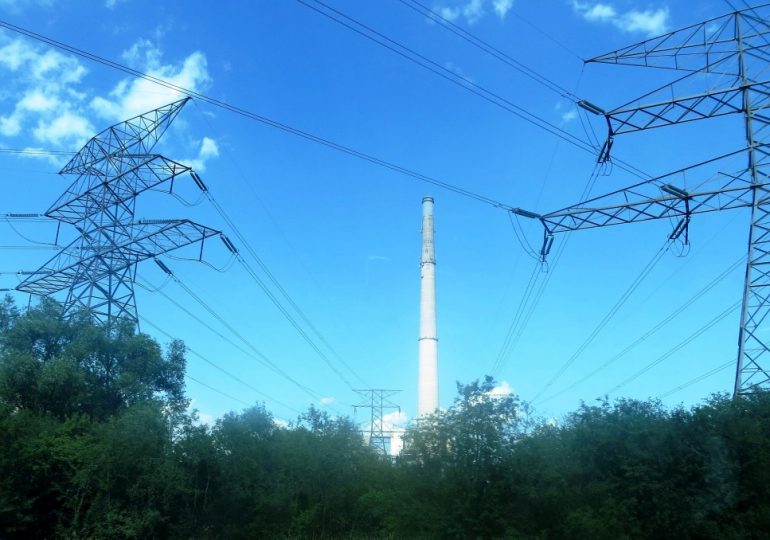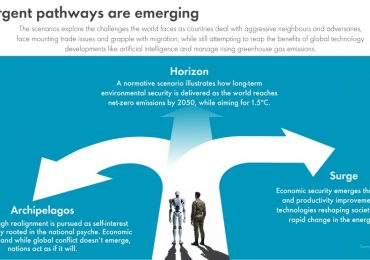Xcel Energy’s latest long-range plan for meeting electricity demand in Minnesota includes six new natural gas peaker plants that critics warn could be obsolete before customers are done paying for them.
Comments filed last month by clean energy advocates and the state attorney general’s office push back on the utility’s plan to build a fleet of small fossil fuel plants as it otherwise ramps up clean energy investments. The facilities would operate sparingly, just a few hours at a time on days when the grid is strained and wind, solar and other clean power can’t keep up with demand.
More economical options exist, though, according to a coalition of clean energy groups that hired experts to model alternatives. The study commissioned by the groups concluded Xcel could save ratepayers as much as $3.5 billion by instead relying more on existing plants, energy storage, efficiency and demand response, and buying surplus power on the regional power grid.
The clean energy groups include Fresh Energy, which publishes the Energy News Network (Fresh Energy’s leadership and policy staff do not have access to ENN’s editorial process.)
The debate is over the utility’s latest integrated resource plan — the first submitted to state regulators since Minnesota Gov. Tim Walz signed legislation last year requiring electric utilities to use 100% clean energy by 2040. Xcel Energy supported the legislation and has proposed various scenarios for achieving the target, but disagreements remain among stakeholders about how to get there, particularly when it comes to cost and equity issues.
A ‘fiction of modeling’
Allen Gleckner, executive lead for policy and programs at Fresh Energy, said Xcel’s gas plant proposal is similar to one in its last integrated resource plan that asked regulators to approve two new peaker plants that would provide as much as 800 megawatts of electricity. Xcel eventually agreed to an open, fuel-neutral bidding process allowing clean energy companies to propose alternatives. That process is still underway, with an administrative law judge expected to make recommendations.
The clean energy groups’ consultants used the same software program as Xcel to arrive at a plan to add 3,800-4,800 megawatts of wind, 400 megawatts of solar, and 800 to 1,200 megawatts of energy storage resources by 2030. Extending contracts at existing peaker plants could add 970 megawatts, and energy conservation initiatives could reduce use during high demand times.
Gleckner said Xcel has taken an exceptionally conservative approach by mostly creating scenarios that did not consider electricity being available from neighboring systems or the MISO regional transmission grid. Gleckner said Xcel does not and has never operated as an island, with MISO delivering power to its customers through a shared resource pool.
“Xcel is using a sort of fiction of modeling because the reality is we’re part of a regional grid,” he said.
The result is a plan to “build a bunch of new resources that we know are either not compatible with our state laws or are going to be costly and likely to retire early,” he said.
Amelia Vohs, climate program director for the Minnesota Center for Environmental Advocacy, praised Xcel for not asking regulators to extend the life of existing fossil plants, unlike its counterparts in other states. Unlike previous long-range plans, Xcel’s latest imagines a future in which large gas and coal power plants are not the backbone of the system.
What that grid will look like remains challenging, Vohs said. Adding to the challenge is rising power demand from data centers, manufacturing, and the electrification of buildings and transportation. Even so, Vohs believes clean energy is ready for a leading role.
“It’s a much better solution that’s flexible in this time of uncertainty without making this big commitment to gas resources for the next 40 years,” Vohs said.
Patty O’Keefe, senior field strategist for the Minnesota Sierra Club, said proposed combustion turbine peaker plants pose “significant environmental and public health risks” because they potentially emit more carbon and nitrous oxide than larger, more common combined cycle gas plants. They also tend to be built in communities already suffering higher pollution levels.
The Sierra Club would like Xcel to focus more on energy efficiency than electricity generation in its planning. Efficiency reduces demand and makes “the transition to clean energy smoother and more cost-effective,” O’Keefe said.
Managing risk
Meanwhile, the office of Minnesota Attorney General Keith Ellison has also weighed in, warning that investments made now may become obsolete “stranded assets,” meaning the plants may become uneconomical or forced to retire before they have delivered projected benefits to customers.
Xcel has acknowledged the risk of stranded assets generally in Securities and Exchange Commission filings, though not specifically in relation to its proposed gas peaker plants.
Utilities are incentivized to build power generation because investors earn a return on capital investment. The attorney general argues that if plants become obsolete or transition to other forms of energy, such as hydrogen, Xcel ratepayers should not have to pay for retrofits and other investments it might have to make to reduce emissions.
In its filings to state regulators, Xcel said it is concerned about having enough firm dispatchable power to meet rising demand quickly during certain times of the day. By 2030, the company will have ended its use of coal for energy generation after closing four coal-burning facilities this decade. The proposal suggests Xcel may need to add even more peaker plants between 2030 and 2040.
Xcel spokesperson Kevin Coss said the company will be “adding a significant amount of wind and solar power to our energy mix” and complementing that generation “with always-available generation — power we can supply any time it’s needed — to reinforce the reliability of the grid.”
Coss said Xcel identifies generation sources in a technology-neutral way so it can decide not to use natural gas combustion plants in the future. The current integrated resource plan calls for fewer firm dispatchable resources than the 2019 version, he said.
The conservative modeling “avoids overreliance on the energy market, which could expose our customers to excessive risk,” Coss said.
Residents, businesses and organizations have until Oct. 4 to send comments on the integrated resource plan to the Public Utilities Commission. The commission is expected to make a decision on the plan in February 2025.
Minnesota advocates say their alternative to Xcel’s plan for new gas plants could save customers up to $3.5 billion is an article from Energy News Network, a nonprofit news service covering the clean energy transition. If you would like to support us please make a donation.
Leave a comment





